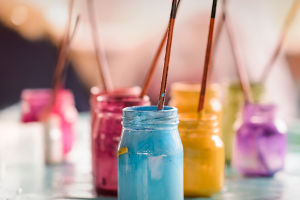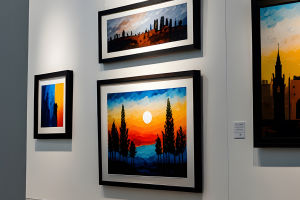Starting something new can feel both exciting and uncertain. For all Lykkers curious about exploring ceramics, this guide offers a friendly and clear path to begin crafting beautiful handmade clay objects at home.
It is designed to help enjoy the process without overwhelming costs or complex tools, focusing on the essentials and encouraging a relaxed, creative mindset.
Getting Started with Ceramics
Minimal Investment, Maximum Enjoyment
Ceramics can be an inviting hobby that doesn’t require a large upfront investment. Starting simple is key — gather a few basic materials, set up a small workspace, and allow creativity to flow without pressure. Embrace the process as a meditative journey where every touch of clay connects you with a timeless craft.
Essential Space Setup
A dedicated spot is needed, even if small, where the creative mess can stay without needing daily cleanup. This encourages regular practice and growth in skill without friction. A stable, flat table around 80x80 cm is ideal for shaping clay. Wooden tables covered with water-resistant surfaces like formica or marine plywood work best.
Good Ventilation and Lighting
The workspace should be airy but not overly dry, as too-quick drying can cause cracks in clay creations. Natural light is preferred to see fine details clearly, though a strong lamp can be a good substitute.
Floors should be easy to clean since clay can become dusty after drying. Having water access nearby is helpful for working with clay and cleaning tools, but plumbing should be protected from clay residue by using buckets or sedimentation containers to avoid pipe clogging.
Organized Storage
Shelves dedicated to different stages of ceramic making—modeling, drying, firing, and decorating—help keep the workflow smooth and enjoyable. A well-arranged space minimizes frustration and maximizes creative energy.
Basic Tools and Materials
Types of Clay
There are several clay varieties suited to different projects. For beginners, stoneware clay (such as Douglas stoneware) is recommended due to its sturdy texture.
White clay offers a clean color base for decoration, while red and black clays provide natural hues and can be highlighted with carving techniques. Mixing different clays is not advised early on because each type behaves differently during drying and firing.
Basic Modeling Tools
Simple wooden tools such as modeling sticks and pointed instruments allow shaping and carving with precision. Rolling pins and wooden spacers help create uniform thickness, preventing warping or cracking in drying and firing. Cutting wires can divide larger blocks of clay smoothly. Water and small sponges are essential for smoothing surfaces but should be used sparingly to maintain clay consistency.
Household Items as Tools
Many everyday objects can inspire and assist ceramic decoration. Cookie cutters, forks, spoons, and sieves offer textures and shapes, encouraging creative exploration without extra cost.
Advanced Tools for Progression
Sanding Materials
Various grades of sandpaper are useful for refining dried clay before firing, smoothing imperfections for a polished finish.
Firing Options
A specialized kiln is needed for firing ceramic pieces at high temperatures, typically around 1000°C. Kilns consume significant power and require stable operation for many hours. Renting kiln space at local studios is an excellent option for beginners who want to avoid high initial investment.
Safety Equipment
Masks, such as disposable FFP2 or FFP3 respirators, protect from fine clay dust during work and sanding. Proper ventilation is essential to safeguard lung health when handling powdered materials.
Optional Specialized Tools
As interest deepens, additional items become valuable. Sifters help prepare smooth slip mixtures for coating. Manual potter’s wheels enable shaping using centrifugal force, ideal for crafting symmetrical vessels. Soft rubber or metal spatulas refine surfaces, and textured fabrics or household items add unique surface decorations.
Helpful Tips for a Smooth Journey
Start Simple
Avoid buying many tools and types of clay at once. Begin with a few essentials and grow the toolkit gradually as skills develop and passion solidifies.
Patience and Motivation
Learning ceramics requires time and willingness to experiment, including accepting that early results may differ from expectations. Creativity blossoms through play and practice.
Organize and Enjoy
A tidy, functional space combined with well-chosen tools will enhance the flow of making and bring more joy to each session.
In Summary
Ceramics is a rich and rewarding craft accessible to all Lykkers ready to dive into the tactile world of clay. By starting with simple tools and a small dedicated space, anyone can unlock the joy of shaping, decorating, and firing unique handmade creations.
The key is to enjoy each moment of the process, embrace learning curves, and gradually build skills and equipment. This artistic adventure promises a fulfilling experience that blends mindfulness, creativity, and hands-on craftsmanship — all from the comfort of home.


